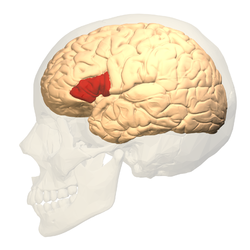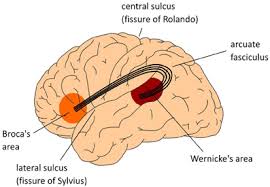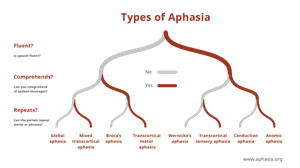Feature Article
Sharif Adnan
Passage: 1
Yes… ah… Monday… er… Dad and Peter H… (his own name), and Dad…. er… hospital… and ah… Wednesday… Wednesday, nine o’clock… and oh… Thursday… ten o’clock, ah doctors… two… an’ doctors… and er… teeth… yah.
I bet you have already raised your eye brows at passage-1, right?
In fact, it is not mine. It was how an aphasia patient of Paul Broca spoke when he was trying to explain how he came to the hospital for a dental surgery.
Ok, let me clear it up.
Coined from the very name of the French physician here, Broca’s aphasia is a language disorder where a patient faces certain problems while producing language. It is a variety of language deficiency, in other words, a certain neurological complication that occurs in terms of speech production.
Since the dawn of human civilization when we first acquired the ability to speak a language, aphasia has appeared as a phenomenon too complex to describe in a few words. It is a language deficiency which affects a patient’s expressive and receptive language skills; as Arif informs about aphasia difficulties (2014) that “…problematize the comprehension of phonology, […] morpho-syntactic production, […], causing grammatical abnormalities.” It develops in certain parts of the human brain (i.e., the parts involved in language processing and comprehension) due to stroke, trauma, tumor, lesions, external head-injuries and so on.
The word aphasia derives from the Greek root word aphasia, which means speechlessness. There are different types of aphasia which can be distinguished based on their syndromes, namely Broca’s aphasia, Wernicke’s aphasia, global aphasia, anomic aphasia, mixed non fluent aphasia, primary progressive aphasia (PPA), and the list goes on. The basic characteristics, causes and effects are given below:
Broca’s Aphasia:
Broca aphasia is named after Paul Broca, a French neurosurgeon who in 1861 first talked about a brain area that involves language production. Broca’s area is located in the inferior left frontal gyrus of the brain cortex. Broca’s symptoms appear if the Brodmann’s area 44 and 45 get damaged. Basically, B/A 44 and 45 are partially responsible for phonological processing, language production and the semantic aspects of language respectively. It is also known as non fluent aphasia.

Brodmann area 44, or 45, is part of the frontal cortex in the human brain
The basic symptoms of Broca’s aphasia are:
- The speech is problematic and slow
- Language production is impaired and lacks melodic intonation
- Words are difficult to understand
- Verbs and conjunctions might be missing at times but nouns, often correct
- The inability to repeat complex sentences
- Failure to comprehend all the words and sentences even when spoken or read slowly
Wernicke’s Aphasia:
In 1874, Carl Wernicke, a famous German neurologist who discovered Broadmann area 22 coined the name of this aphasia. Wernicke’s aphasia is also known as fluent aphasia because the patient who suffers from this aphasia, can speak fluently but produces meaningless sentences. For instance,
I called my mother on the television and did not understand the door. It was too breakfast, but they came from far to near. My mother is not too old for me to be young.
Passage-2

Brodmann area 22, is portion of the left temporal lobe in the human brain
The symptoms of Wernicke’s aphasia:
- Fluent speech but meaningless
- Syntactically correct but morphologically incorrect sentences
- Cannot repeat words or sentences
- Unable to understand what they read or hear
- Add unnecessary words, even creates neologisms
- Contains many paraphasias (e.g., -girl, -curl, -bread etc)
- Effortless, melodic tone
- Sudden pauses or lapses in an otherwise smooth conversation
Global Aphasia:
It is the most severe form of non-fluent aphasia that happens because of brain injuries in multiple language processing areas known as Wernicke’s and Broca’s. It affects the receptive and expressive language skills of an individual in such a way that every mode of speech, no matter how delivered, produces a series of neonatal babblings or unrecognizable utterances. In fact, the severity of the disorder depends on the damaged components of the brain.

Global aphasia occurs due to a lesion in the perisylvian cortex, including Broca’s and Wernike’s areas
The symptoms of Wernicke’s area:
- Produce few recognizable words
- Little or no spoken language
- Neither can write nor read
- Inability to repeat words, utterances, or phrases
- Intellectual and cognitive incapability
 Picture: Collected
Picture: Collected
Anomic Aphasia:
It is a milder form of aphasia. In this case, a patient understands speech well, repeats words or sentences correctly and can read adequately. But he/s faces problem to recognize the names. Uttered sentences are grammatically correct but full of vague words.
Primary progressive aphasia (PPA):
PPA is a neurological syndrome where a patient’s language ability becomes slow and comparatively impaired. The symptoms are problematic in league with memory loss. PPA occurs due to the deterioration of brain tissues which are important for speech and language.
Mixed Non-Fluent Aphasia:
If a person suffers a mixed non fluent aphasia he/s will have sparse and effortful speech, limited in their comprehension and will not be able to read or write beyond elementary level.
There are many other possible combinations of language deficits based on the syndromes that do not exactly fit into these categories. Some of the components of a complex aphasia syndrome may also occur in isolation. The medical procedures to cure aphasia include a diagnosis of the problem with pathological data, appropriate drills and therapy by the speech and language pathologists (SLP). In the Bangladeshi context, language therapy is comparatively unknown because of a lack of proper awareness among the people and insufficiency of SLP experts rather than other health professionals.

